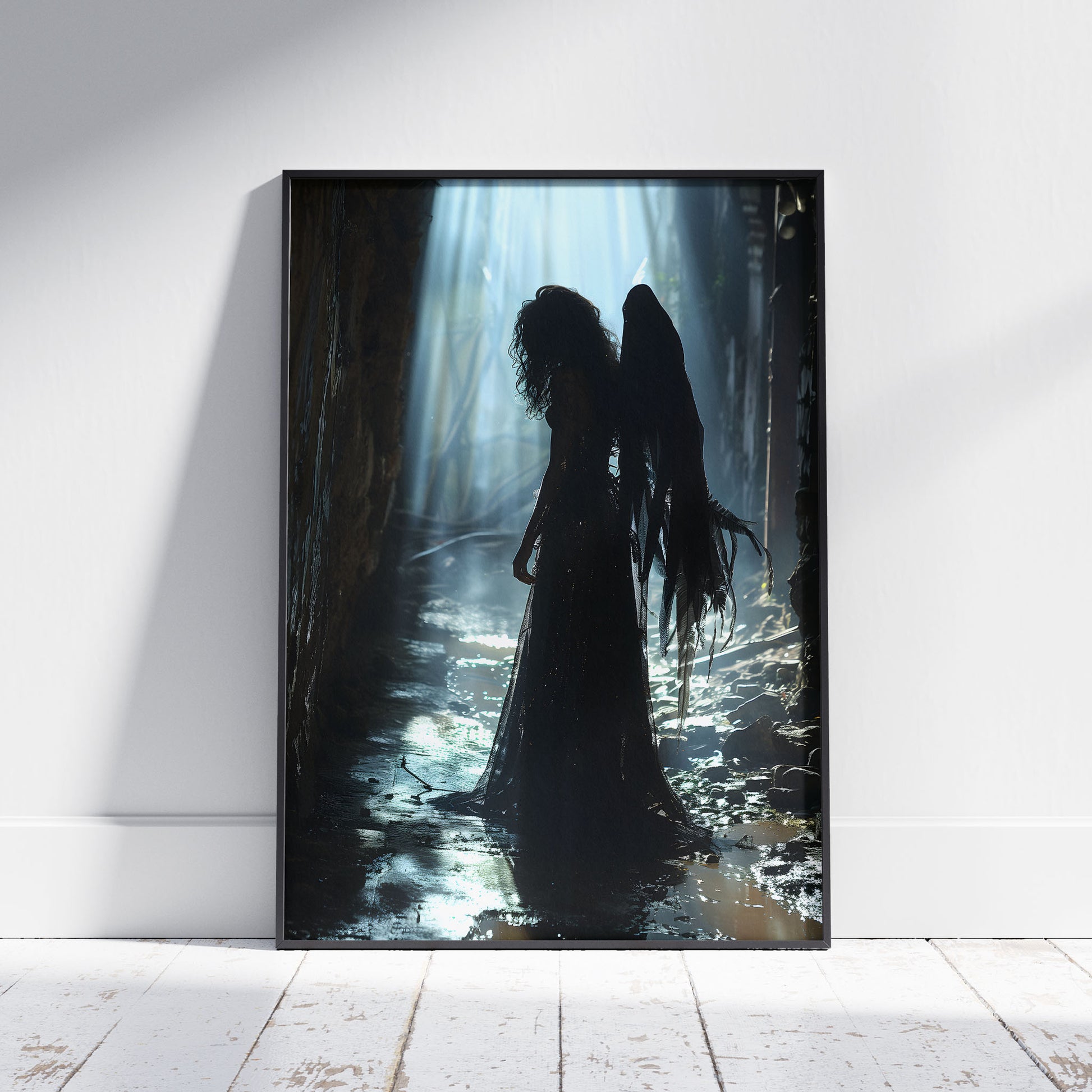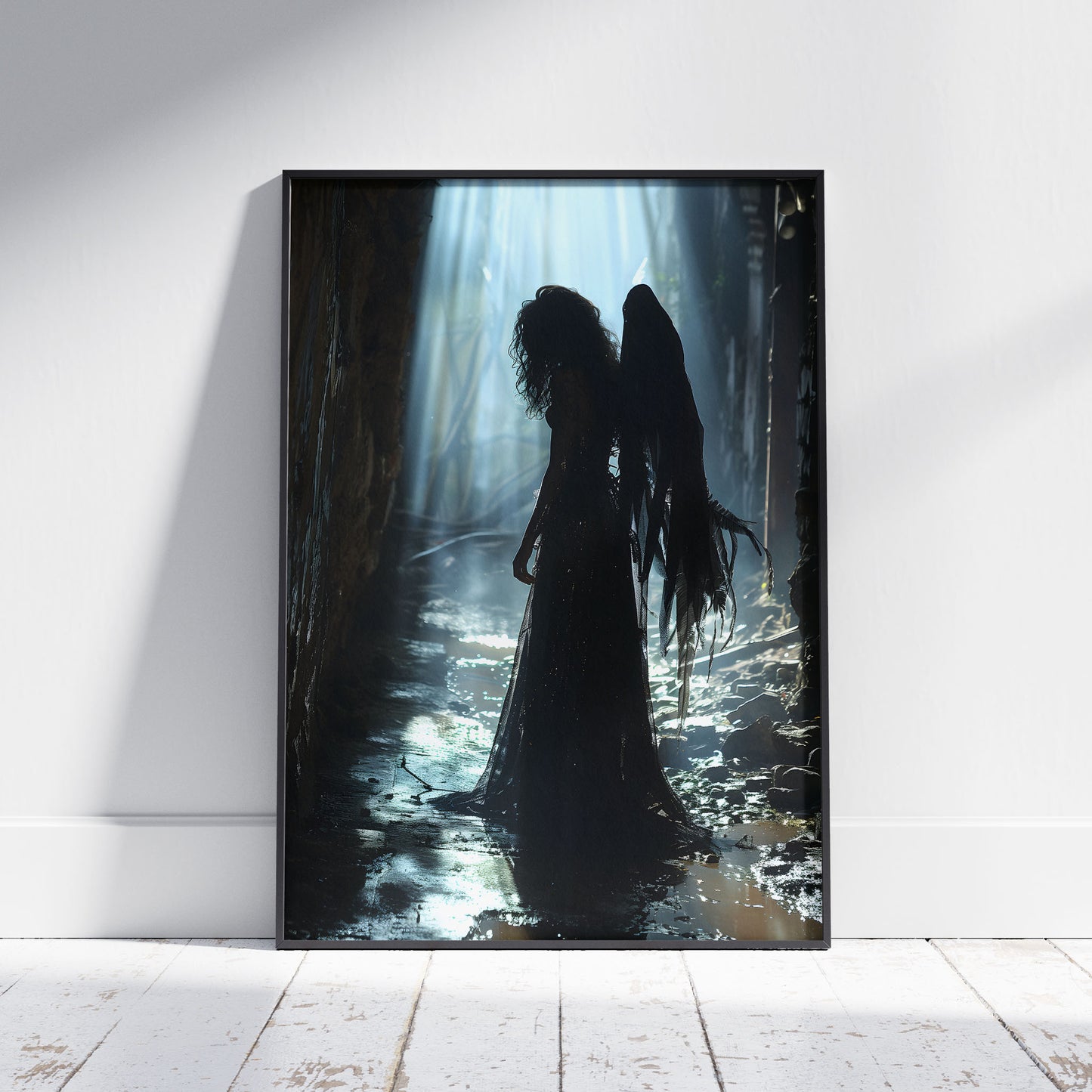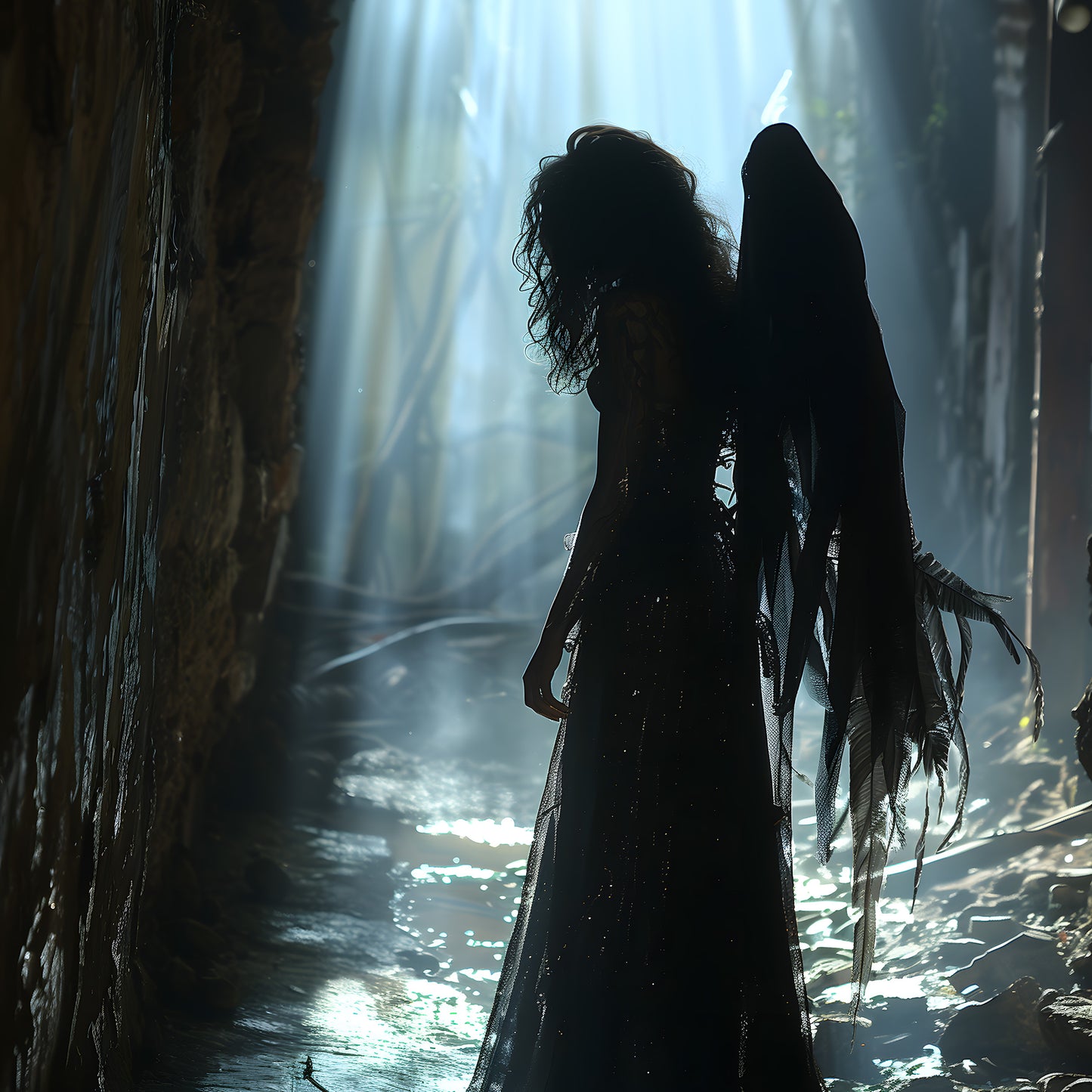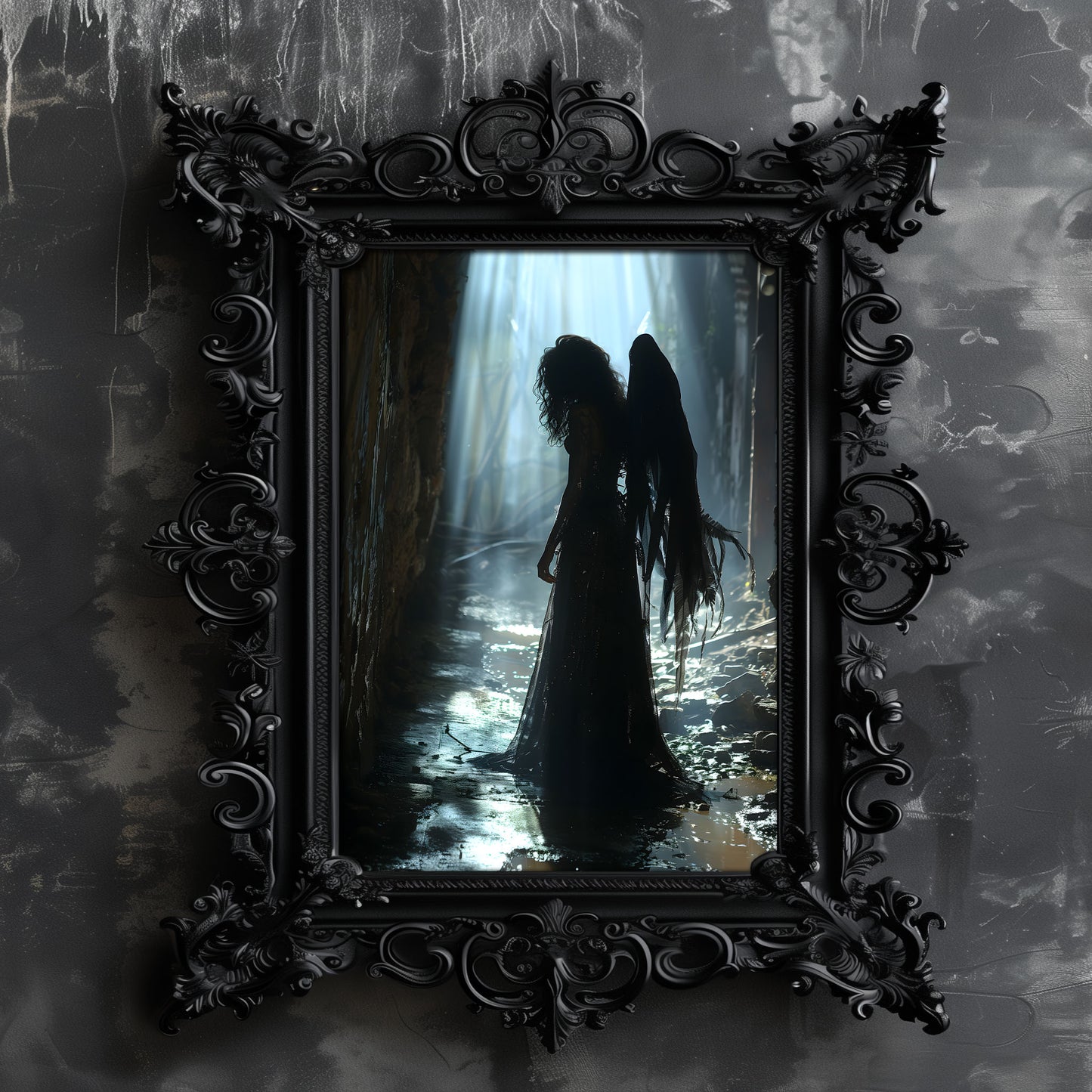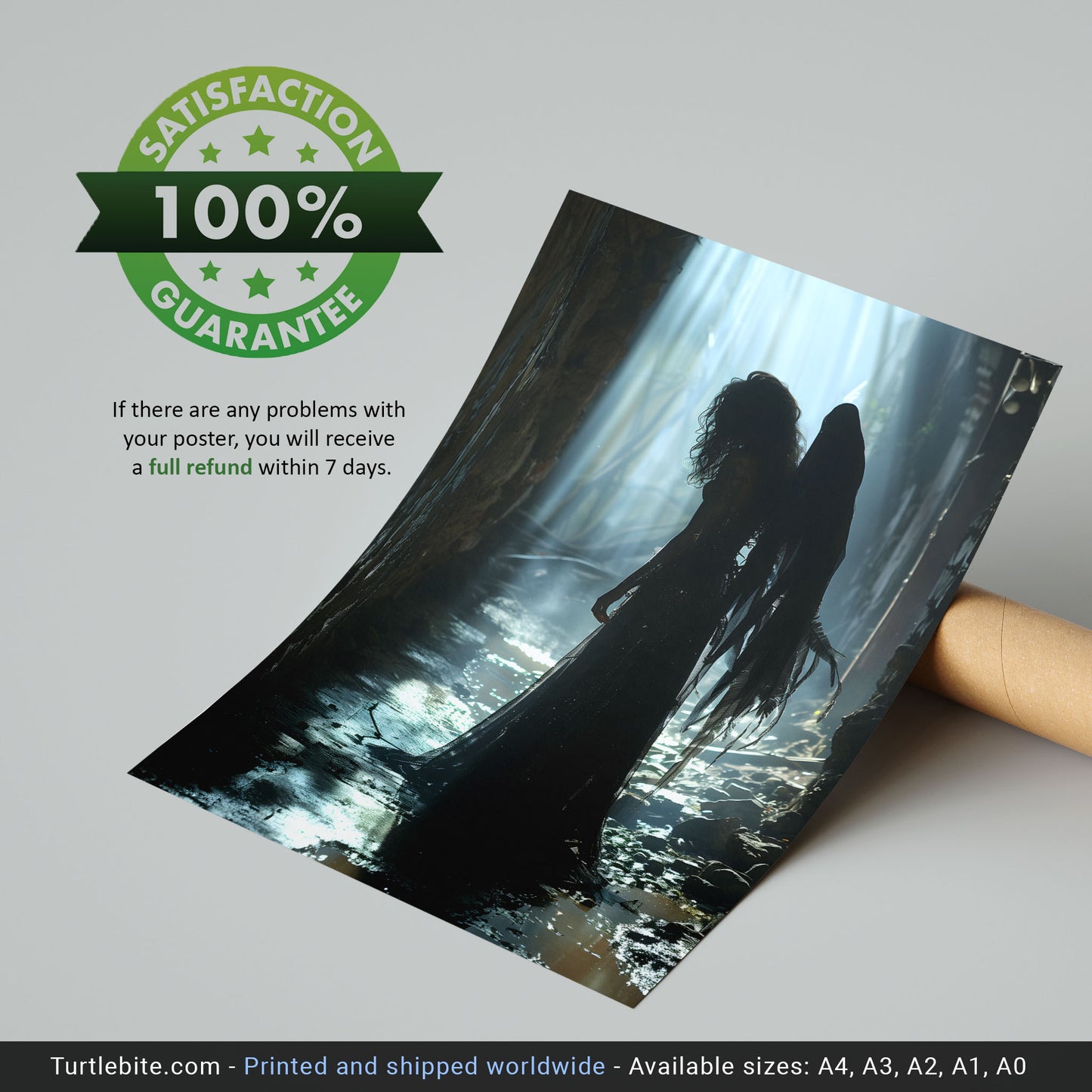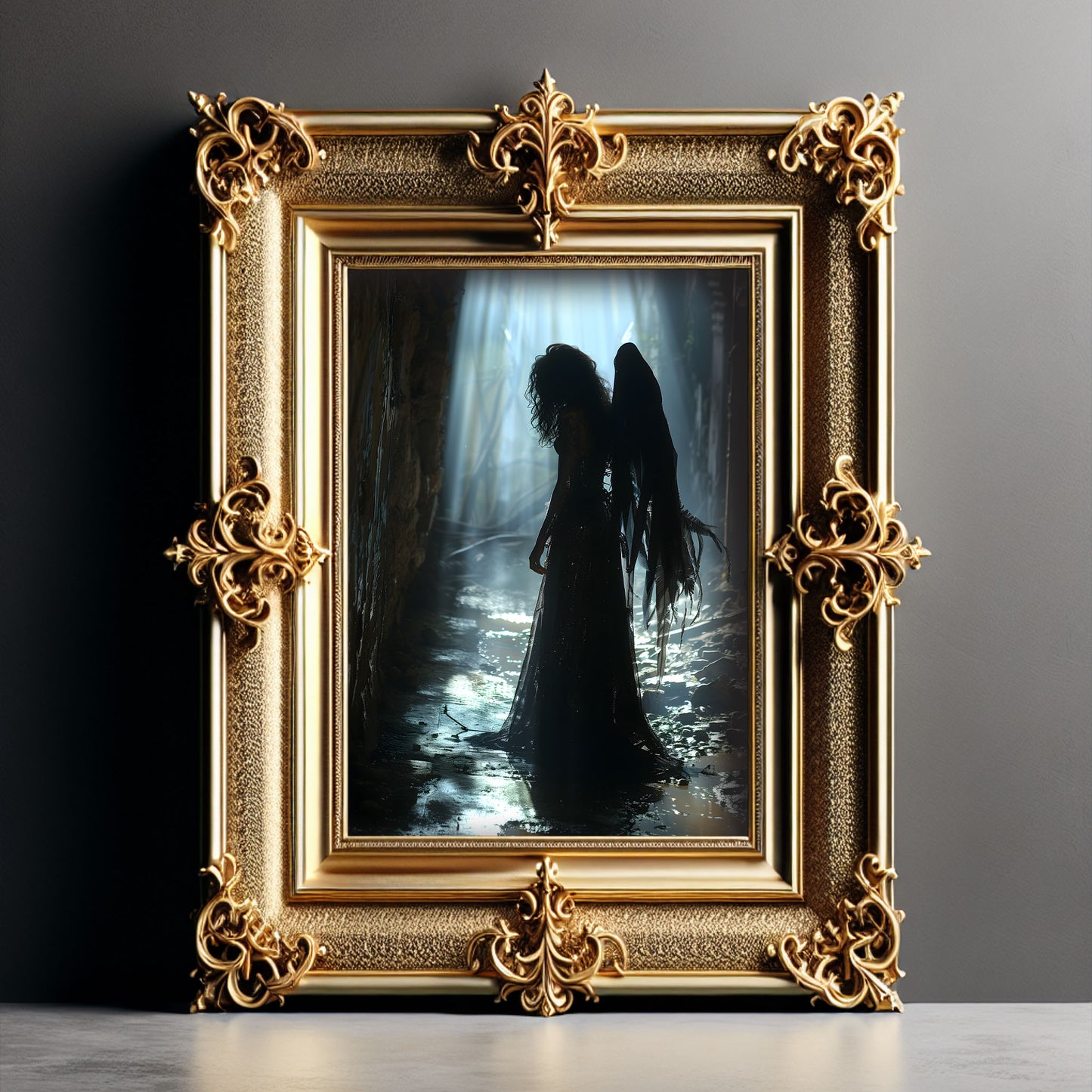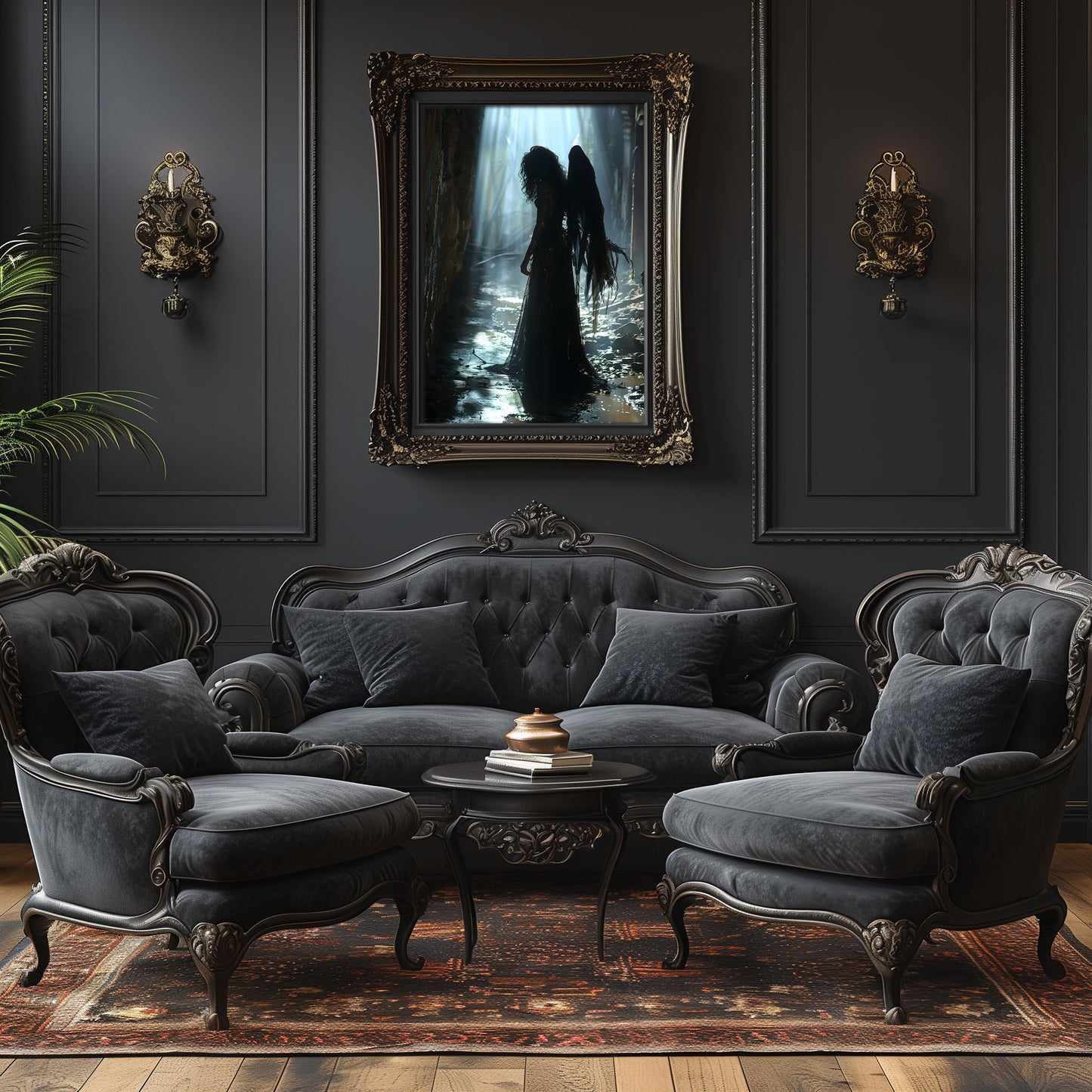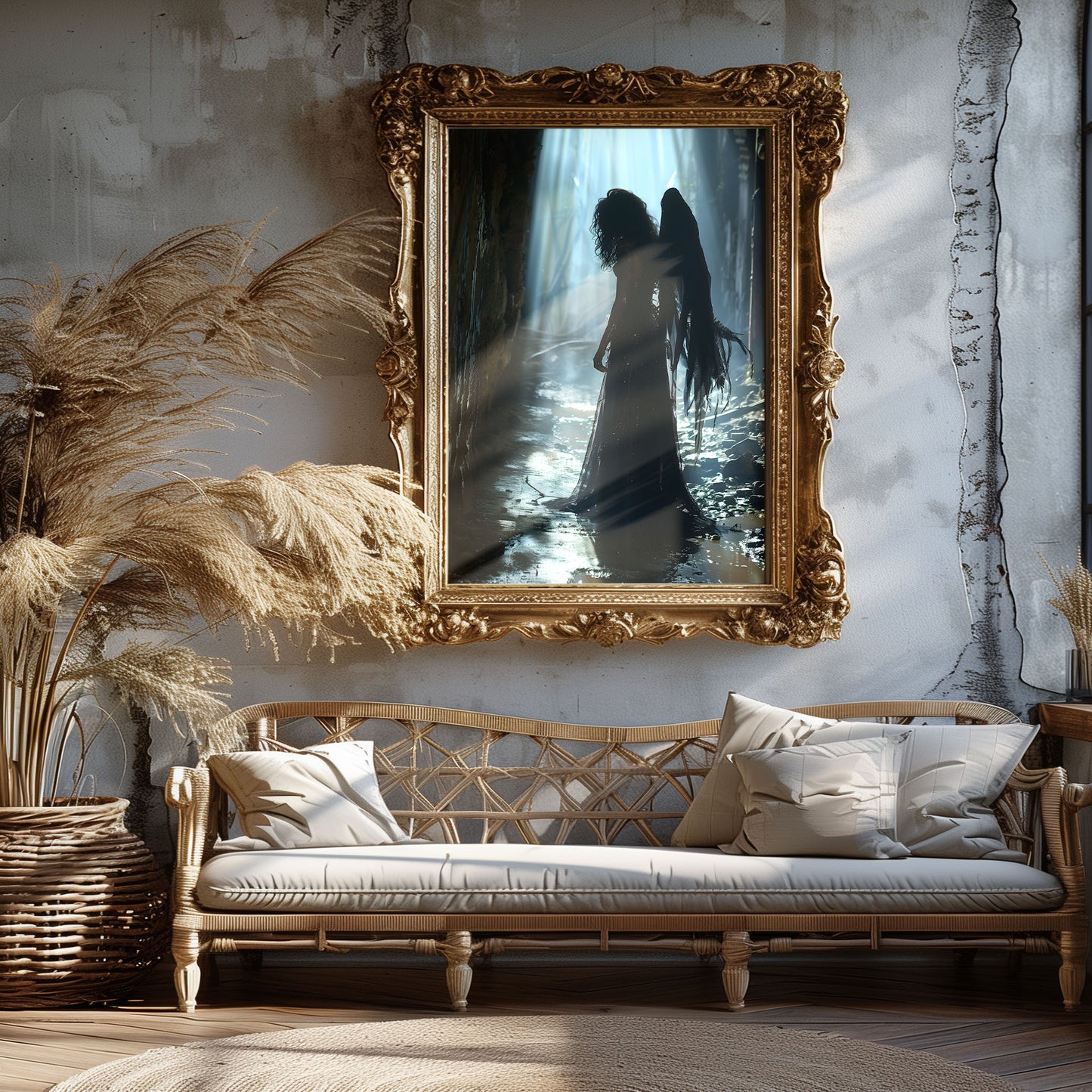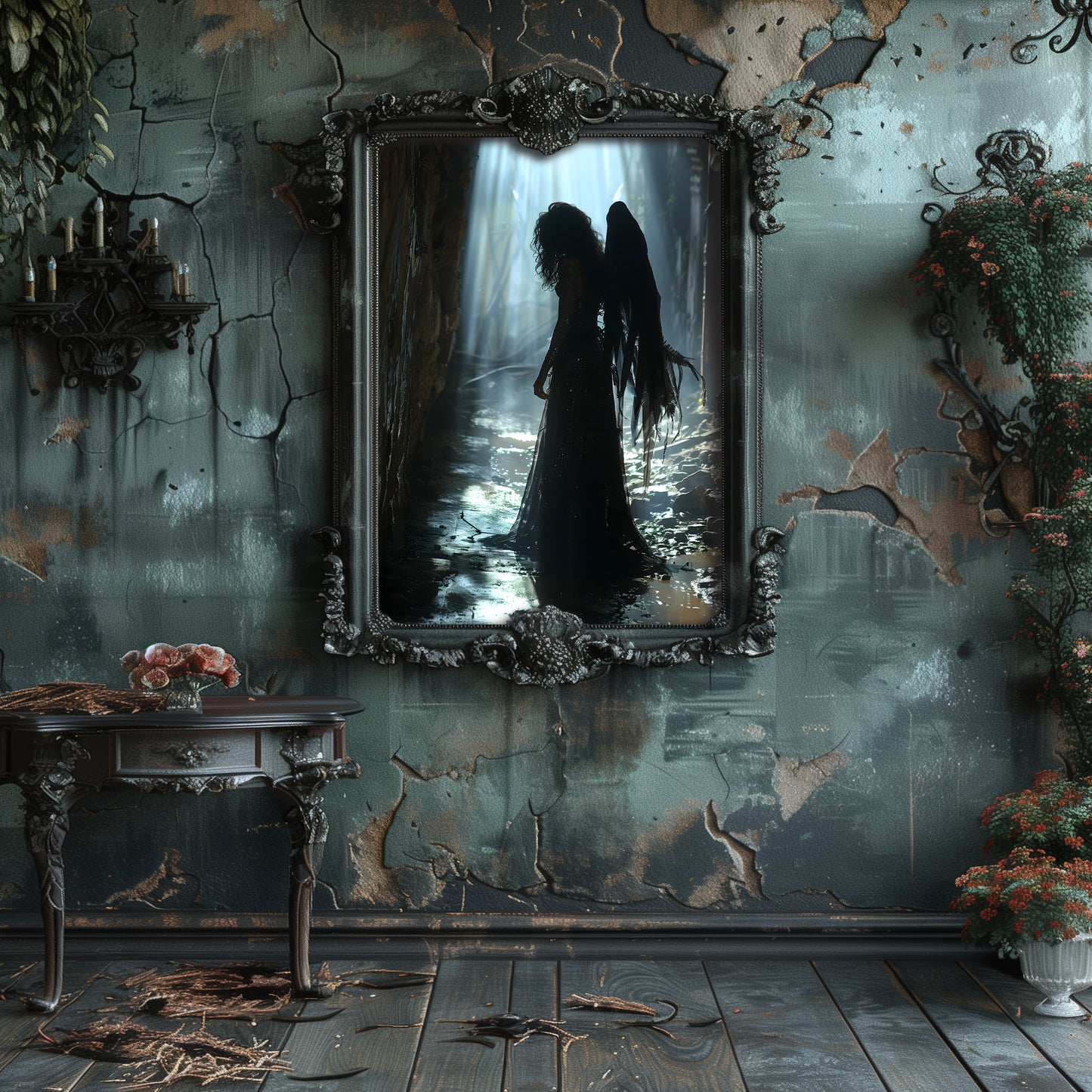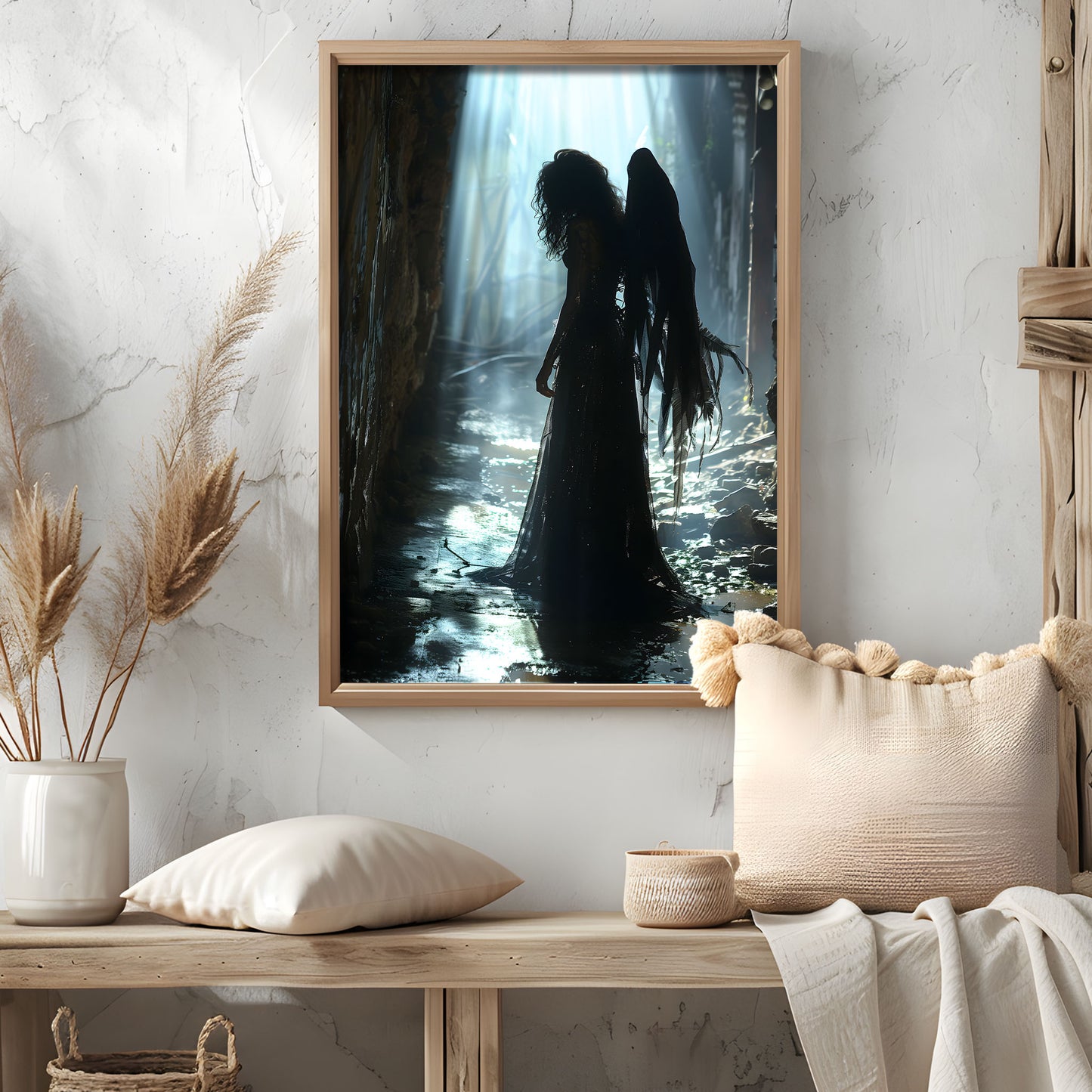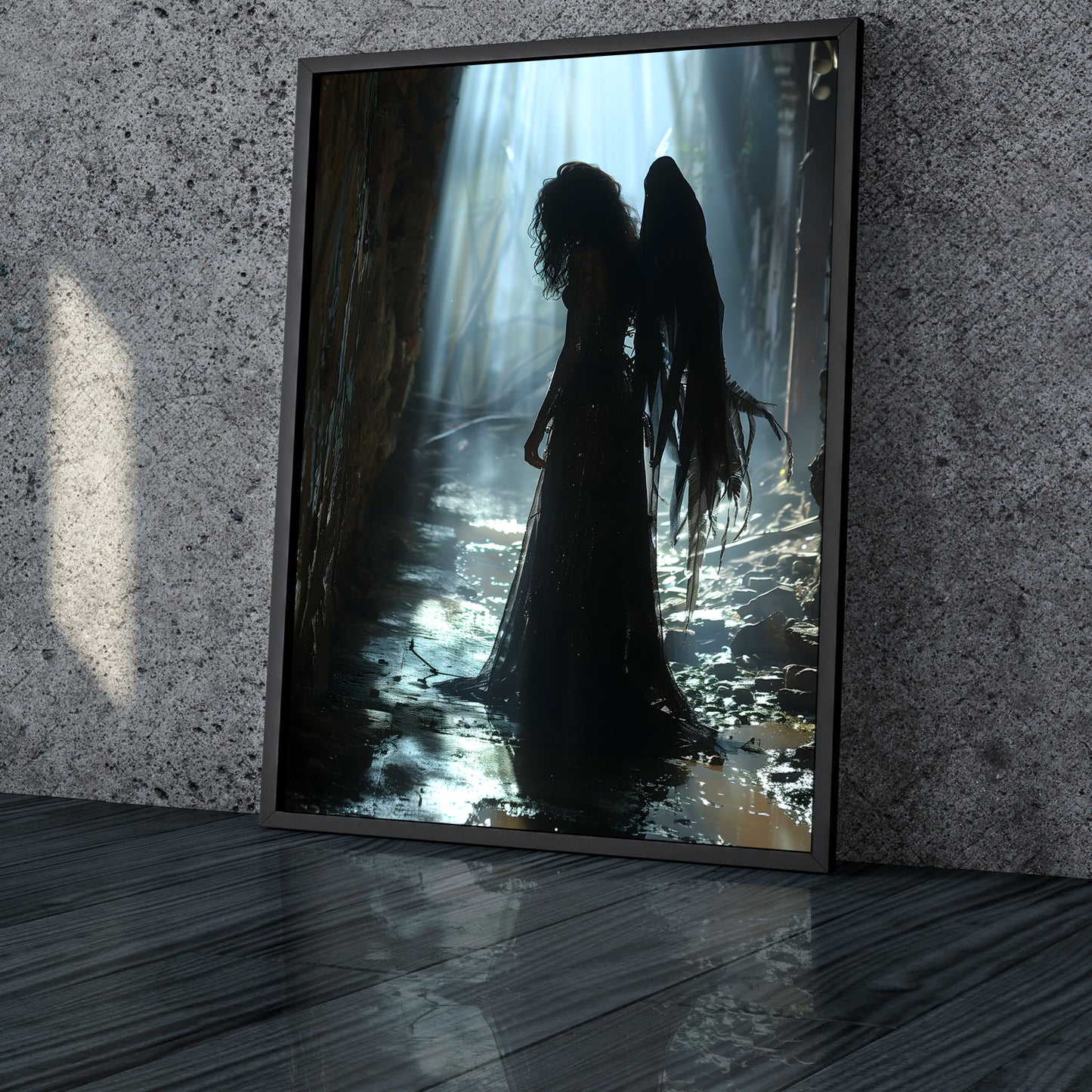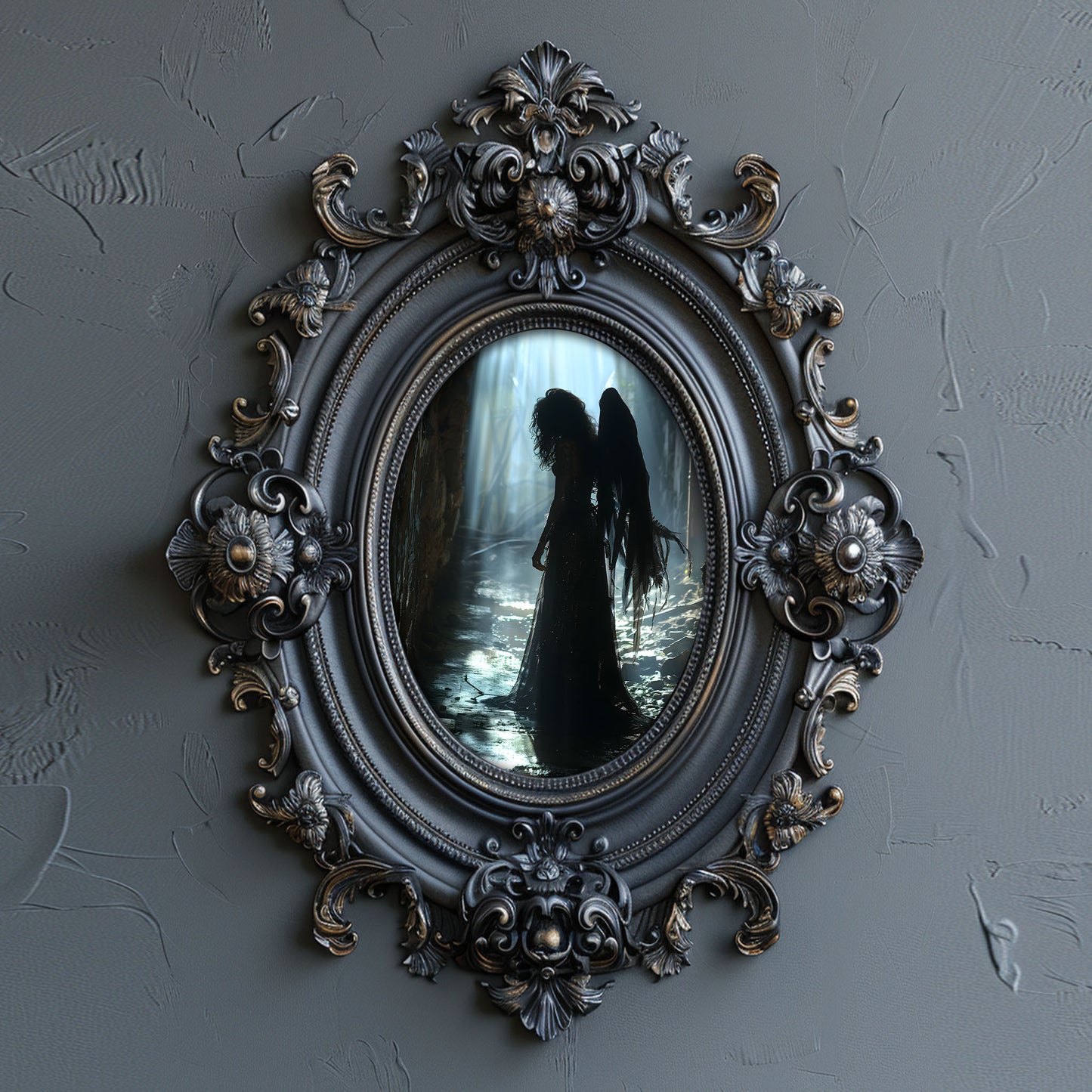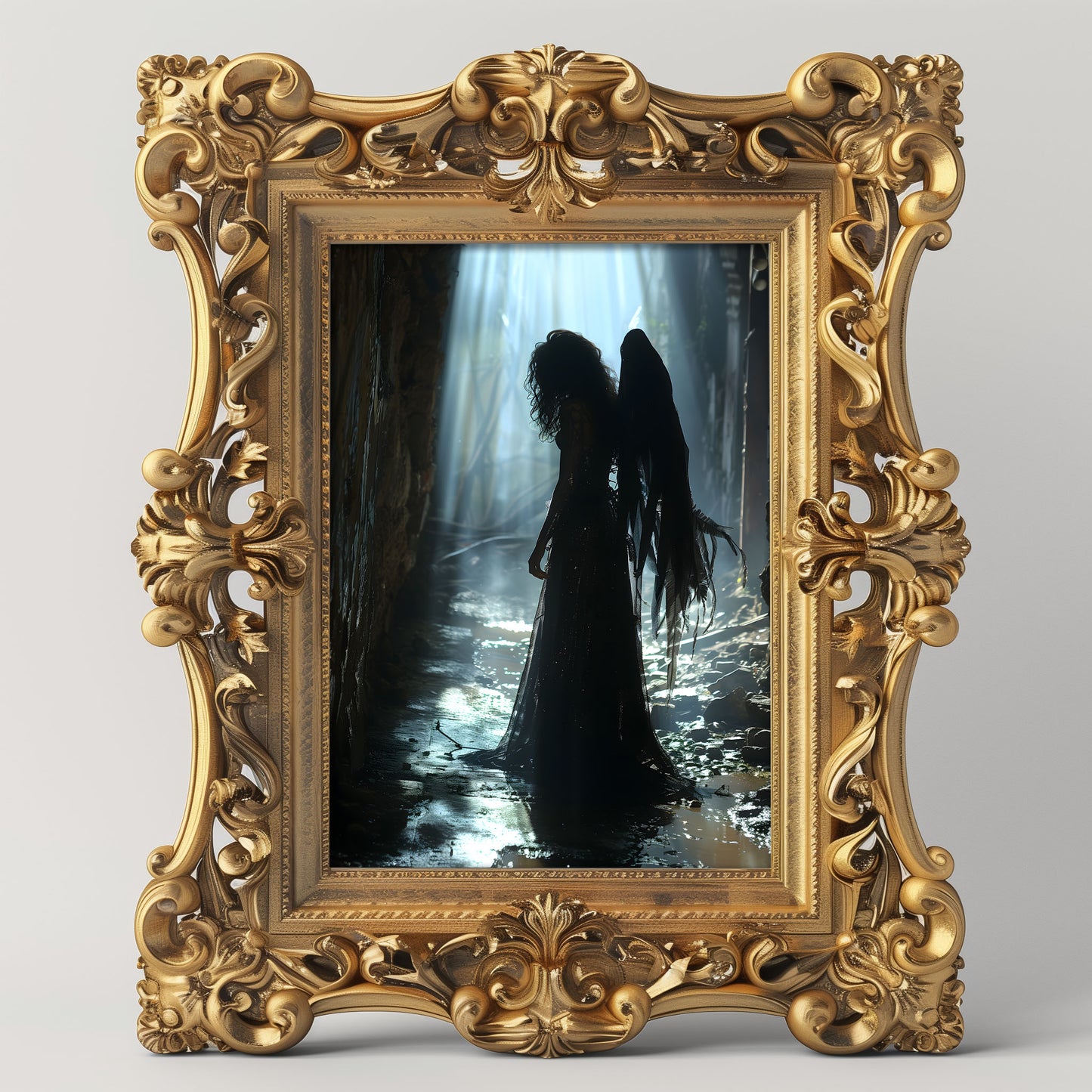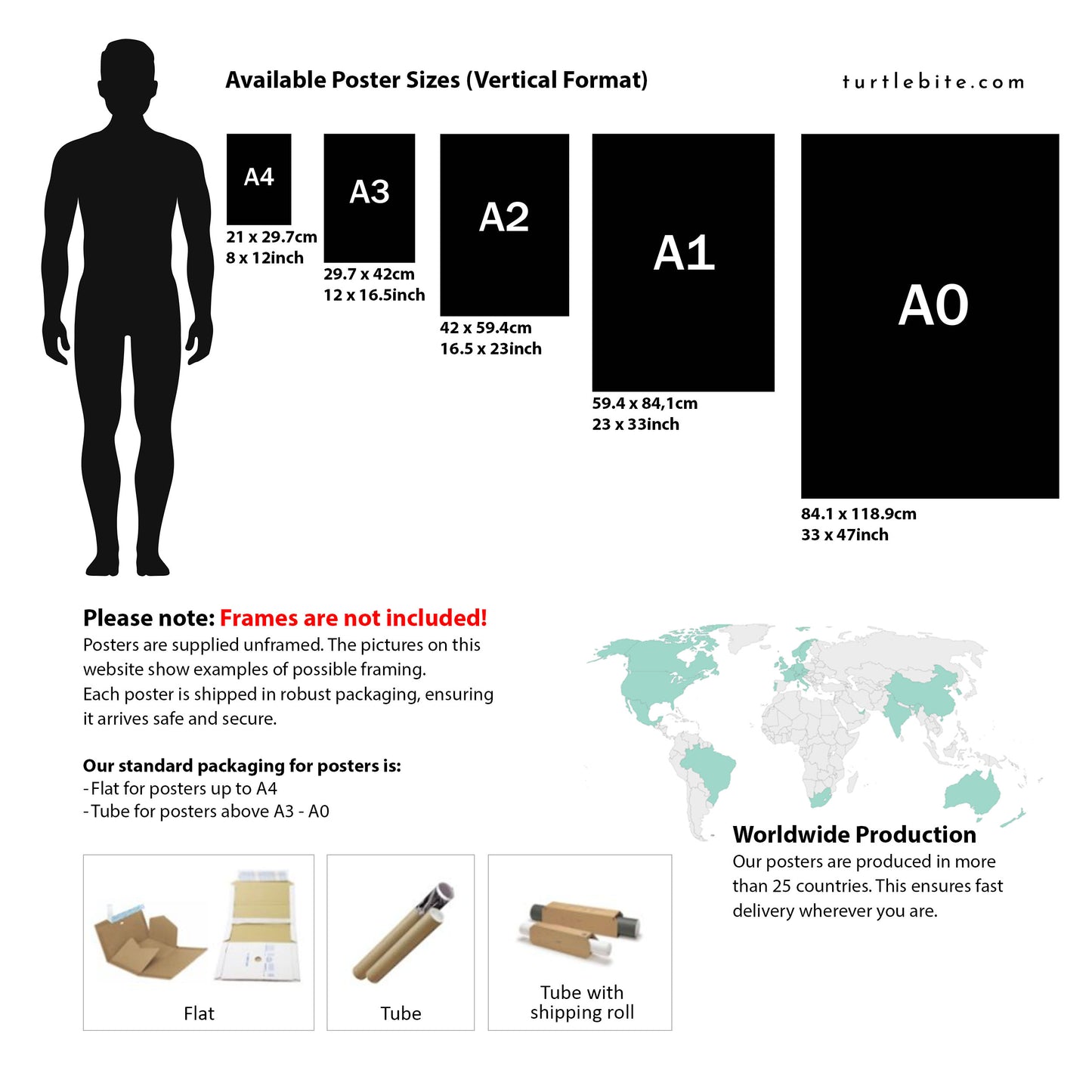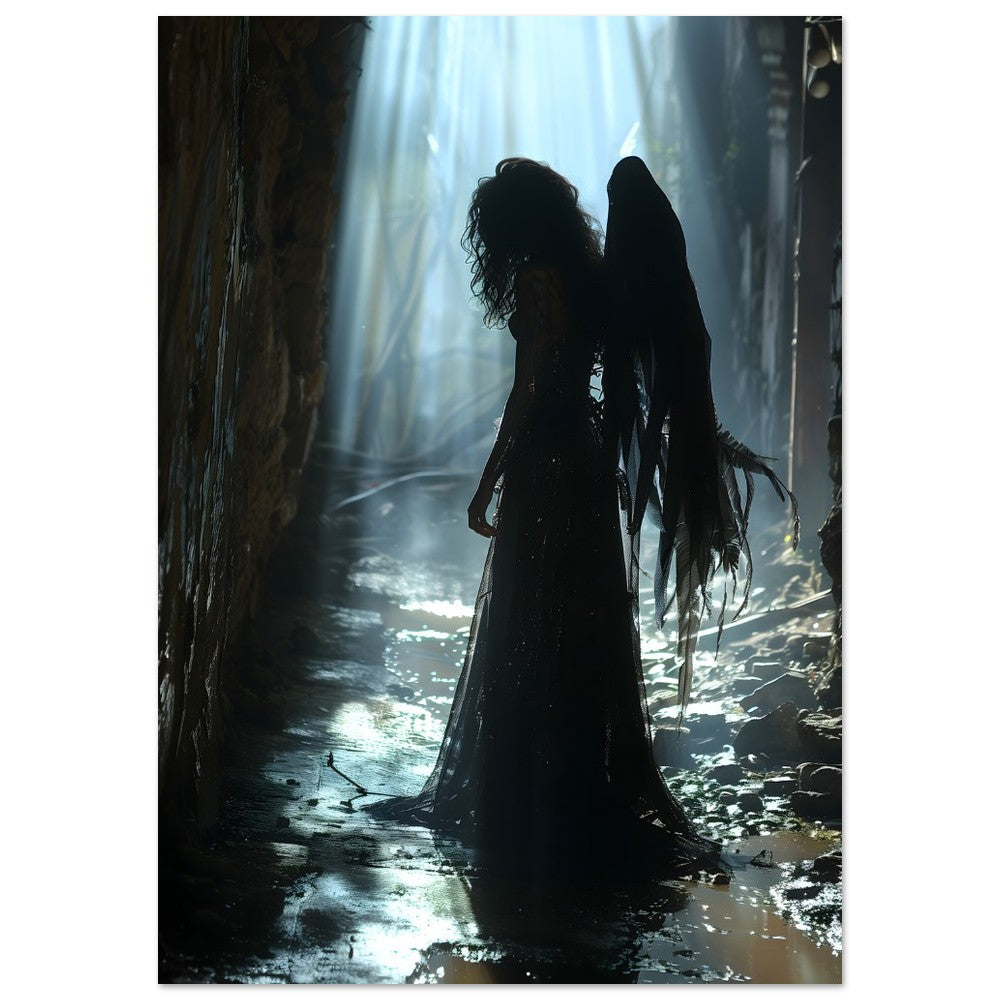
The Gothic Fallen Angel: A Tale of Shadows in the Muddy Forest
ChristianShare
Introduction: Fallen from Grace
In the realm of dark fantasy and gothic storytelling, few images captivate like that of a fallen angel - cast down not only from the heavens but from memory itself. In this powerful photograph, we encounter such a figure: a dark, winged woman stranded in a narrow, muddy path within a desolate forest. Her presence is ghostlike, defiant yet forlorn.
This image speaks in whispers and silhouettes. It’s not merely a portrait - it’s a narrative carved in shadow and illuminated by fractured light. It tells of a celestial being caught between worlds, her wings no longer instruments of flight but reminders of ruin. As we explore the layers of visual storytelling in this haunting tableau, we uncover symbols of power, sorrow, and reluctant survival.
From the texture of the path to the curvature of her spine, everything echoes with unspoken meaning. Let’s delve deeper into this cinematic composition and the angel’s tale suspended in time.
Foreground Focus: The Angel in Shadow
At the heart of the composition stands the silhouette of the fallen angel herself, a commanding yet subtle presence. Her posture is slightly slouched - neither defeated nor defiant, but adrift. This liminal stance amplifies the mystery: Is she resting? Watching? Mourning?
The foreground’s glistening wet surface reflects shards of her figure in muted, distorted mirrorings. The water becomes both a literal and symbolic element - a fractured memory or perhaps the tears of the earth. It wraps around her bare feet, grounding her in this murky realm.
Her form is almost entirely in shadow, forcing the viewer to study the negative space, to search for detail in darkness. The effect is haunting, intentional. It lures the eye and invites introspection. It’s an intimate conversation between subject and observer, urging us to peer deeper, closer, into the shadow where clarity usually dissolves.
Despite the darkness, the figure glimmers subtly - thanks to the transparent shimmer of her dress. The light dances over the fabric like ghostlight, catching in threads, hinting at something divine that still lingers in this forsaken being.
Her isolation in the frame is also striking. She is alone, centered but distant, both in location and emotion. The visual hierarchy demands we pay attention to her, yet we are never granted full access - she is mystery incarnate.
Composition and Lighting: Ethereal Illumination
The composition is vertically elongated, emphasizing the towering trees or alley walls around her and the narrowness of her path. This visual squeeze reinforces the feeling of entrapment or exile. There’s nowhere to turn, no expansive sky or open meadow - only this corridor of gloom.
However, the most enchanting element in the image is the divine light that spills from above. Shafts of pale blue light pierce through the canopy like divine swords. These beams illuminate the scene dramatically, almost religiously, casting the angel in a partial halo while simultaneously turning her into a silhouette.
This duality is essential: she is both revealed and obscured. The light doesn’t free her - it showcases her burden. This contrast elevates the mood from eerie to tragic-beautiful.
The interplay between hard shadows and diffused light also enhances texture and dimension. It sharpens the gritty surfaces of the forest floor while allowing the gauzy wings and translucent dress to catch flickers of sparkle. It’s gothic cinema at its finest - a chiaroscuro dance where light doesn’t save but sanctifies suffering.
The photographer’s deliberate use of natural light (or mimicking it artificially) draws a line between heaven and earth - one she is no longer allowed to cross. Instead, she lingers here, where light reminds her of what was lost.
Costume & Wings: Gothic Textures & Symbolism
The figure’s attire and wings are crucial in decoding the narrative. Her dress - dark, flowing, and semi-transparent - is adorned with faint shimmering elements, perhaps sequins or ethereal mesh. It cascades around her like mourning water, suggesting sorrow cloaked in elegance.
This is no typical fantasy dress - it’s gothic to its core. The fabric appears aged, torn at the hem, more relic than garment. The texture evokes decay but is laced with a vestige of grandeur, as if she once wore it to celestial courts before her fall.
Her wings are a focal point unto themselves: not bright or feathery, but ragged and ghostly. They're long, tattered, and charcoal-dark. Their frayed edges resemble burnt paper or dried seaweed, hanging in strips. These are not the wings of a guardian angel, but of a creature expelled from grace.
Symbolically, wings often suggest freedom. Here, they do the opposite. They weigh her down like memories too heavy to cast aside. Their damaged state mirrors emotional wounds - once strong appendages now rendered ceremonial and broken.
The contrast between elegance and ruin reinforces gothic sensibilities. She is beautiful, but the beauty is one forged in suffering, not celebration. Every thread on her robe, every rip in her wing whispers of a story untold.
Her wild hair adds to the chaos - a crown of defiance or madness, swirling into the shadows. Altogether, her costume tells us this is no ordinary woman. She is a myth, a poem, a forgotten epic cast into a damp world.
Background & Environment: The Muddy Forest as Emotional Mirror
The setting feels like a dreamstate - a liminal forest alley with no beginning or end. Vines and broken stone walls frame the corridor, enclosing the angel in natural decay and human ruin. This is not a lush forest but one eroded by neglect, draped in vines, shadows, and ghostlight.
The puddled, muddy path beneath her is especially evocative. Waterlogged and uninviting, it doubles as a metaphor for emotional stagnation. She is not flying - she is rooted here, feet in muck, wings in tatters, a fallen being forced to navigate this sticky, terrestrial path.
The mist that rises from the ground softens the decay with a layer of mystique. It gives the forest an almost sacred feel - like an abandoned cathedral carved from nature and sorrow. Every beam of light, every wall crack becomes part of a decaying shrine dedicated to loss.
The colors are muted - dominated by greys, deep greens, and faint hints of light. The absence of vibrant color further detaches the scene from the living world, reinforcing the idea that this is a realm between death and memory.
Ultimately, the forest doesn’t just serve as a backdrop; it is a character of its own. It mirrors the angel’s inner world - one of fading beauty, loss, and eerie calm.
Symbolism & Mood: Themes of Exile and Transcendence
The fallen angel archetype is rich with symbolic weight. She represents exile - cast down from paradise, but not entirely mortal. Her presence here is an echo of celestial grace entangled with earthly sorrow.
The mood is melancholic but sublime. There is no overt horror, only a soft, mournful atmosphere that invites empathy. This is not a creature to fear, but one to grieve with. She embodies the moment after tragedy - when the chaos has passed, and all that remains is memory and consequence.
Her wings may be broken, but her posture is not fully bowed. There’s resilience hidden in the shadows, a glimmer that she still holds fragments of her divinity. This duality - between destruction and dignity - is what makes the image unforgettable.
In literature and art, fallen angels often serve as metaphors for the human condition: beings with greatness in their past, struggle in their present, and mystery in their future. Here, that metaphor is fully realized in visual form.
The image doesn’t demand resolution. It doesn’t show a beginning or end. It offers a moment - a sacred stillness - where we are asked to sit beside her in the mud and remember what it means to fall, and still remain.

